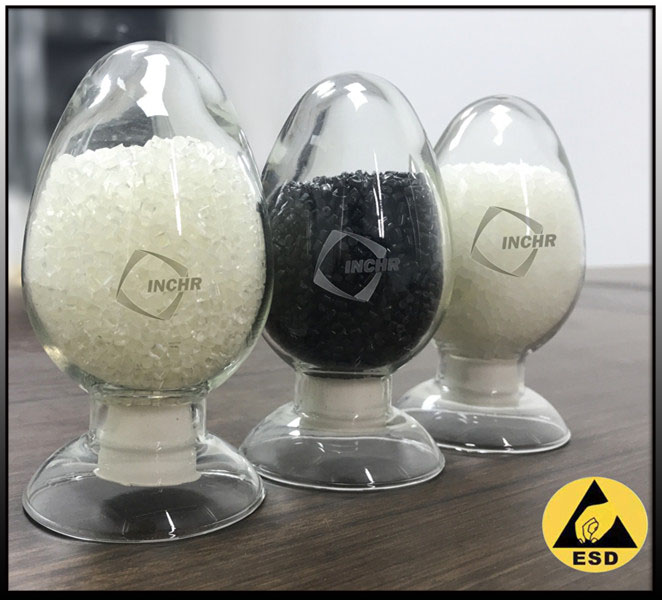In the high-stakes world of electronics manufacturing, a single invisible spark – electrostatic discharge (ESD) – can silently destroy sensitive components worth thousands of dollars, cripple production lines, and damage your reputation. Protecting against this threat isn’t optional; it’s fundamental. ESD plastics form the critical frontline defense, creating a safe environment from component handling to final assembly and packaging.

Why ESD is the Silent Killer in Electronics
ESD occurs when built-up static electricity rapidly flows between two objects at different electrical potentials. While humans feel a shock at around 3,000 volts, sensitive microchips and electronic components can be damaged or destroyed by discharges as low as 5 volts. The consequences are severe:
Immediate Catastrophic Failure: Components like ICs, transistors, and diodes are instantly destroyed.
Latent Damage: The most insidious threat. A component appears functional but suffers weakened performance or reduced lifespan, failing later in the field – leading to costly warranty claims and brand damage.
Production Disruption: Damaged components cause rework, scrap, and line downtime.
Data Loss: Static can corrupt memory chips during handling.
ESD Plastics: More Than Just “Anti-Static”
While general anti-static masterbatch reduces static build-up and dust attraction, ESD plastics are engineered to a higher standard. Their primary function is to safely control and dissipate static charges, preventing damaging discharges. They achieve this through specific electrical properties:
Surface Resistivity: The key metric for ESD performance. ESD plastics are classified based on their ability to resist the flow of electricity across their surface:
Conductive: < 10^4 ohms/sq (Rapidly grounds charges)
Static Dissipative (SD): 10^4 to < 10^11 ohms/sq (Safely dissipates charges at a controlled rate)
Insulative: > 10^12 ohms/sq (Holds charge – DANGEROUS for ESD-sensitive areas)
ESD applications typically require Conductive or Static Dissipative materials.
Volume Resistivity: Measures resistance through the material’s bulk, important for applications needing shielding.
How ESD Plastics Work: The Mechanisms
ESD properties are imparted using specialized additives or inherently conductive polymers:
Carbon-Based Fillers:
Carbon Black: The most common and cost-effective. Imparts conductivity but often limits color options (black/grey) and can affect mechanical properties at higher loadings.
Carbon Fiber: Provides excellent conductivity and enhances mechanical strength/stiffness, but is more expensive and can be abrasive.
Carbon Nanotubes (CNTs): Offer high conductivity at very low loadings, preserving aesthetics and mechanical properties, but are premium-priced.
Metallic Fillers: (Less common for general ESD) Stainless steel fibers or coated particles offer conductivity but add significant weight.
Inherently Dissipative Polymers (IDPs): Specialty polymers like certain polyether block amides (PEBA) or thermoplastic polyurethanes (TPU) naturally offer static dissipation without fillers, providing excellent clarity, colorability, and consistent performance.
Permanent Anti-Static Additives: Some advanced additive chemistries provide long-lasting, non-migratory static dissipation suitable for demanding ESD applications without heavy filler loading.
Critical Applications for ESD Plastics in Electronics
Component Handling & Transport:
Trays (IC Trays, JEDEC Trays)
Reels & Reel Covers (Tape-and-Reel)
Totes & Bins (Stackable containers)
Handling Fixtures & Workstation Mats
Assembly & Workstations:
Soldering Jigs & Fixtures
Conveyor Components
Tool Handles (screwdrivers, tweezers)
ESD-Safe Chairs & Flooring
Testing & Rework:
Test Sockets & Burn-in Boards (Carefully selected to avoid signal interference)
Rework Stations & Benches
Packaging & Shipping:
Conductive Shielding Bags (often metal-inlaid, but plastic layers utilize ESD additives)
Foams & Cushioning
Rigid Boxes & Dividers
Device Enclosures & Internal Components: For end products requiring ESD-safe housings or internal parts near sensitive electronics.
Selecting the Right ESD Plastic: Key Considerations
Required ESD Level: Conductive (rapid grounding) vs. Static Dissipative (controlled discharge)? Target surface resistivity range? (Check ANSI/ESD S20.20 or IEC 61340 standards).
Mechanical Properties: Strength, stiffness, impact resistance, wear resistance? Carbon fiber enhances strength; IDPs offer flexibility.
Cleanliness & Outgassing: Critical in cleanrooms (semiconductors, optics). Some additives can shed particles or outgas volatile compounds. Look for low-contamination grades.
Chemical Resistance: Must withstand solvents, fluxes, cleaning agents used in production.
Color & Aesthetics: Carbon black limits color; IDPs and some masterbatches allow colors. Need transparency?
Regulatory Compliance: FDA? USP Class VI? UL flammability ratings? REACH/RoHS?
Cost: Carbon black is economical; CNTs and IDPs are premium. Balance performance needs with budget.
Beyond Material Choice: A Complete ESD Control Program
ESD plastics are vital, but they are one element of a comprehensive ESD control program based on standards like ANSI/ESD S20.20. This also includes:
Proper Grounding (ESD workstations, wrist straps, flooring)
Ionizers to neutralize charges on insulative materials
Appropriate Personnel Training
Regular Auditing & Testing (including surface resistance verification) [https://www.inchr-esd.com/contact-us/]
Invest in Protection, Ensure Reliability
ESD damage is preventable. By strategically implementing ESD plastics tailored to specific handling, assembly, and packaging needs, electronics manufacturers dramatically reduce component failure rates, improve production yields, enhance product reliability, and protect their bottom line. Don’t let invisible static be your Achilles’ heel.
Explore our range of high-performance ESD plastic compounds and masterbatches designed to meet stringent industry standards. Contact our experts to find the optimal static control solution for your application. [ https://www.inchr-esd.com/products/ ]
Mastering ESD Plastics Enhancing Protection and Durability for Electrostatic-Sensitive Industries




